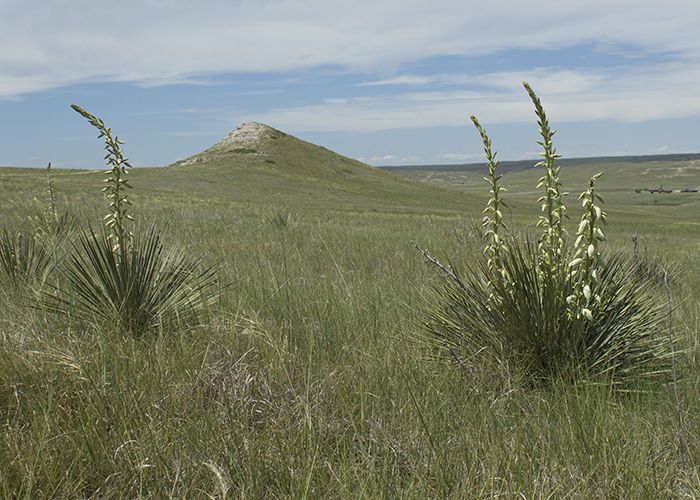 Previous Day |
West Bayard, NE → Agate, NE → Denver, CO 303.0 mi (487.6 km) |
 More 2017 Adventures |
My ears are tingling with the rumor that my next destination features incredible works of art left behind by ancient land beavers! I’d heard of beavers creating magnificent dams and flooding forests, but ancient artwork? Excitedly, I hustled north from Scottsbluff to explore Agate Fossil Beds National Monument!
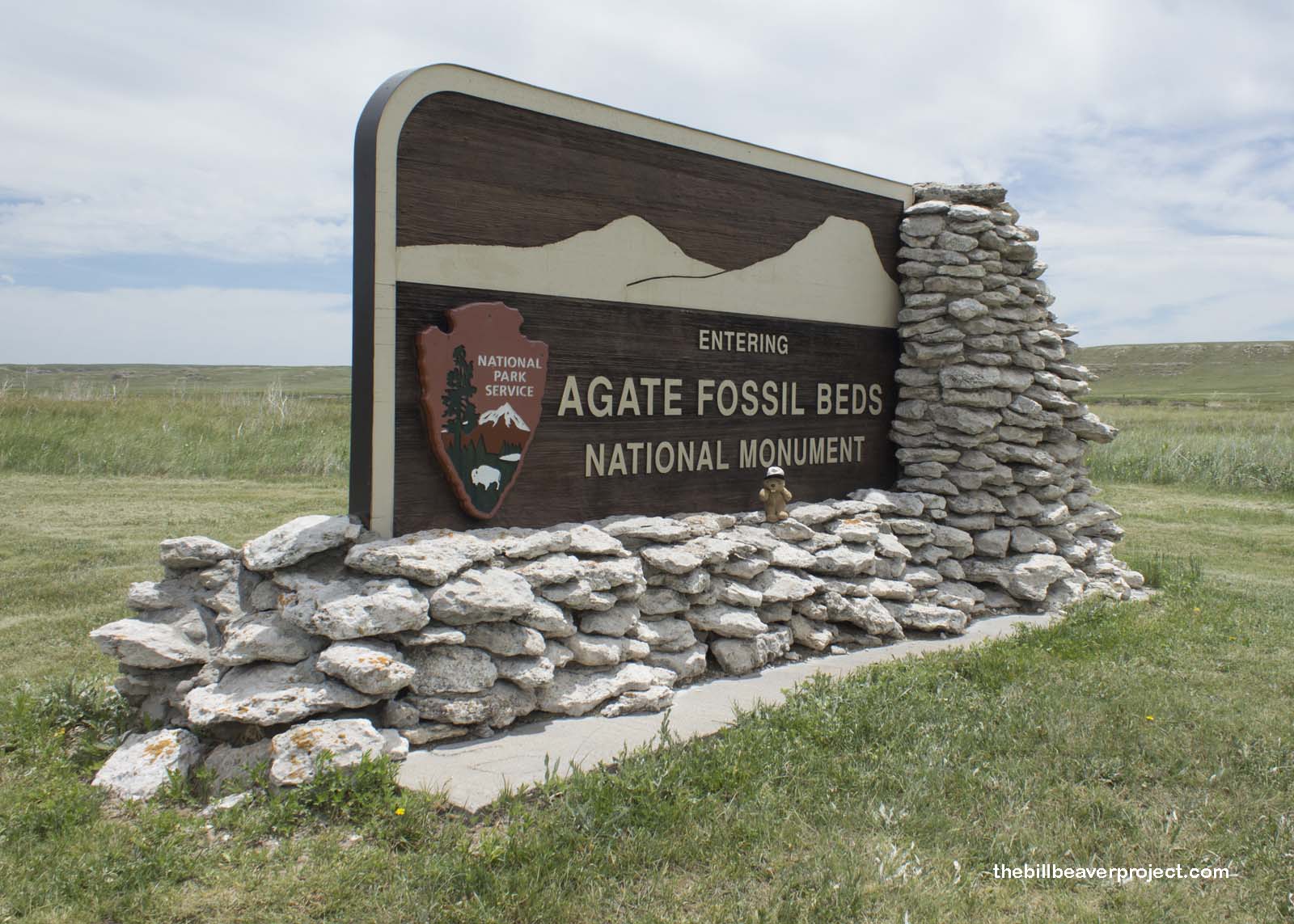 |
This terrain surrounding the Daemonelix Trail was part of an ancient savannah during the Miocene Epoch, which lasted from about 23 million to 5 million years ago! To put that in perspective, the Miocene is one of two epochs in the Neogene Period, which is the second of three Periods in the Cenozoic Era, the age of mammals!
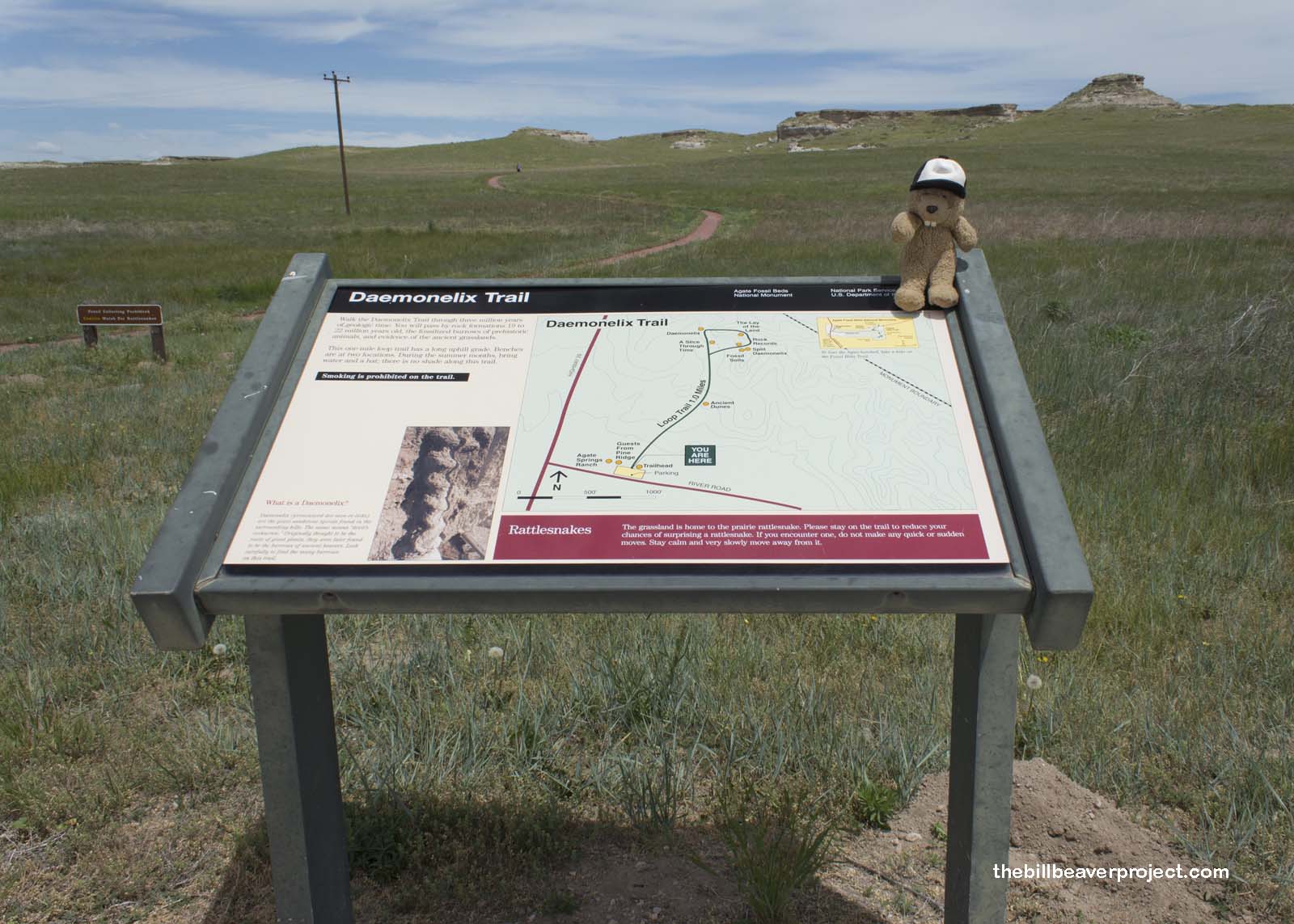 |
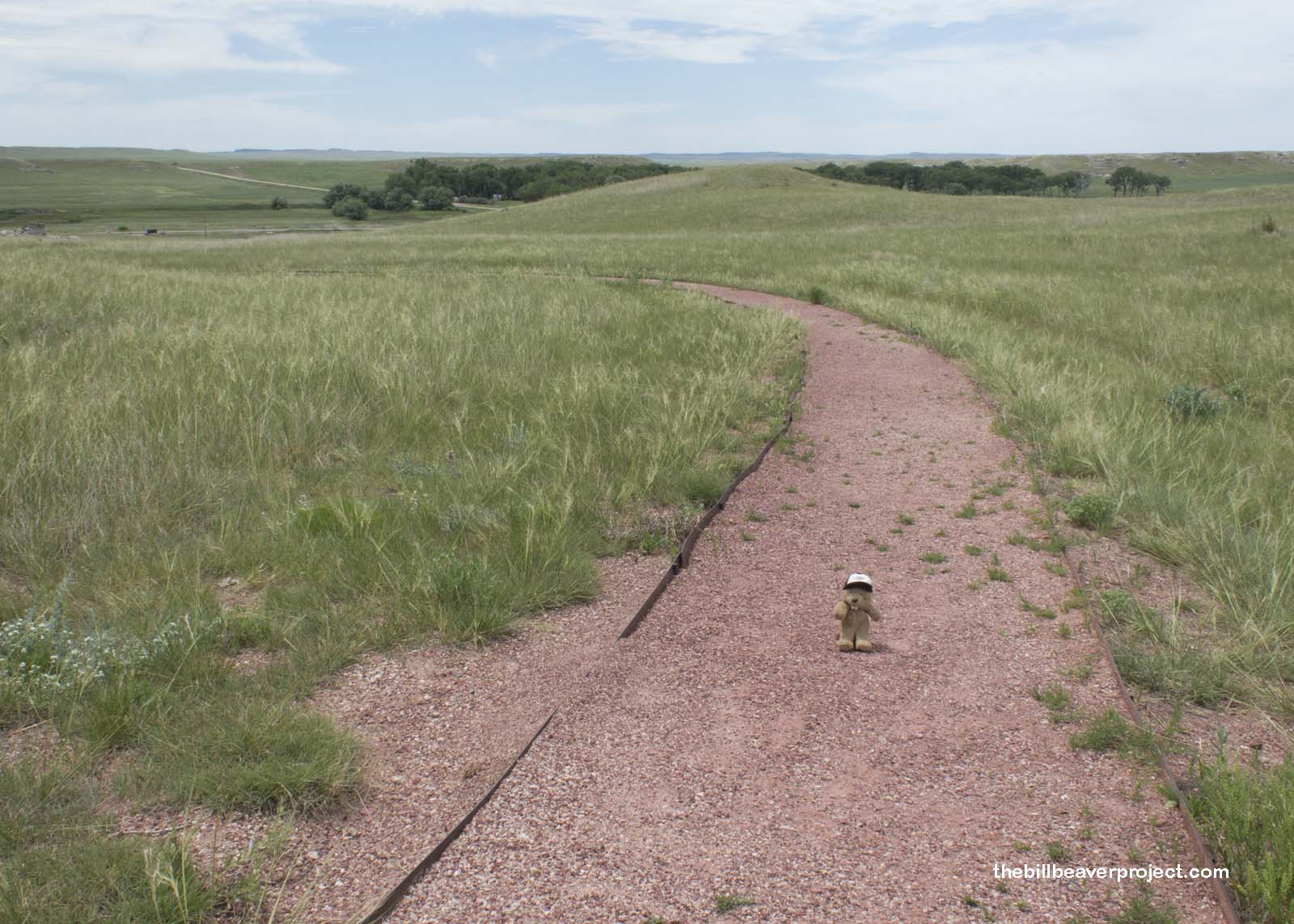 |
Today, this landscape is covered by prairie with some ancient relics of the Miocene savannah sticking out of the grass, like these petrified sand dunes where the dig team of Erwin Hinckley Barbour made an astonishing discovery in 1891. Deep underground were petrified spirals, some of them ten feet tall! They were full of sand and surrounded by a weird fibrous substance. Mr. Barbour called them daemonelix, which means the “Devil’s Corkscrew” and hypothesized first that they were naturally formed under a lake, then that they were parts of ancient sponges, and then that they were tap roots of an ancient tree. But what were they really?!
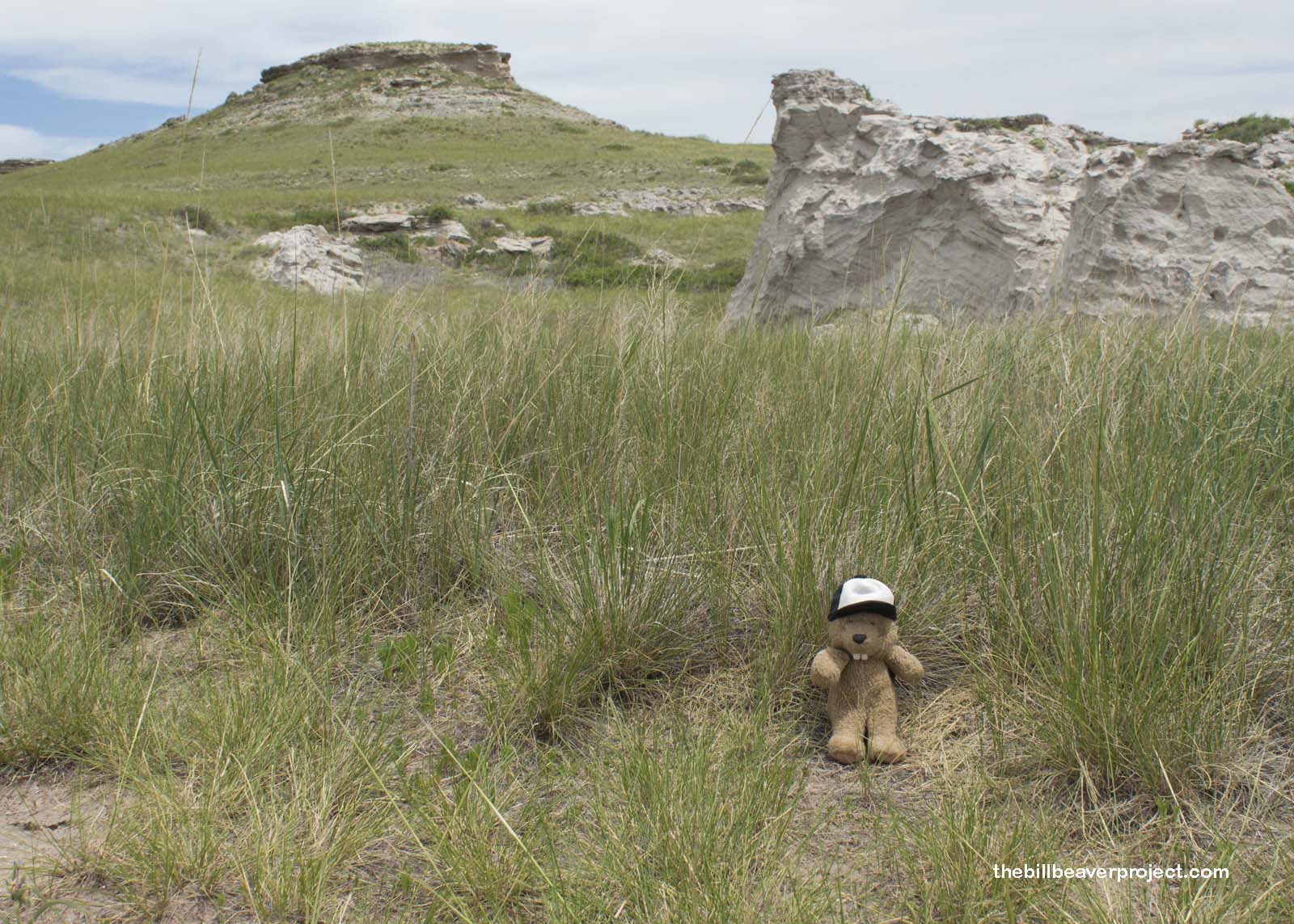 |
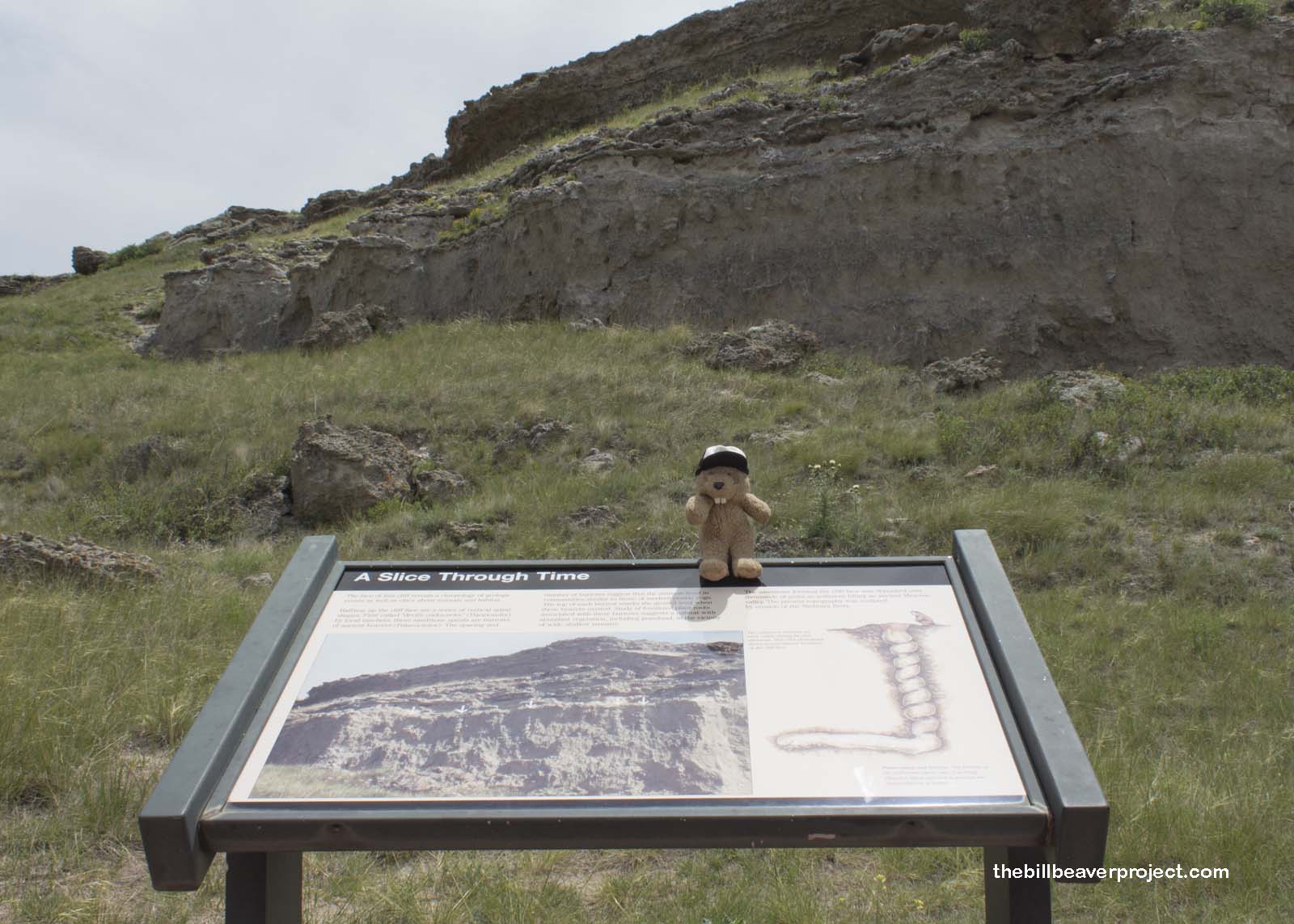 |
Edward Drinker Cope’s startling discovery of an ancient beaver’s skeleton inside one of these corkscrews solved the mystery. Millions of years ago, the palaeocastor made its home on these plains much like modern prairie dogs do today, digging spiral-shaped burrows into the sandy soil to stay safe from beardogs and ravenous entelodonts. These corkscrews are known as trace fossils or ichnofossils, which are in the same category as footprints and poop! They were a far cry from the dams and lodges that I was used to, but they sure were beautiful after the passing of millennia! Good work, ancient beavers!
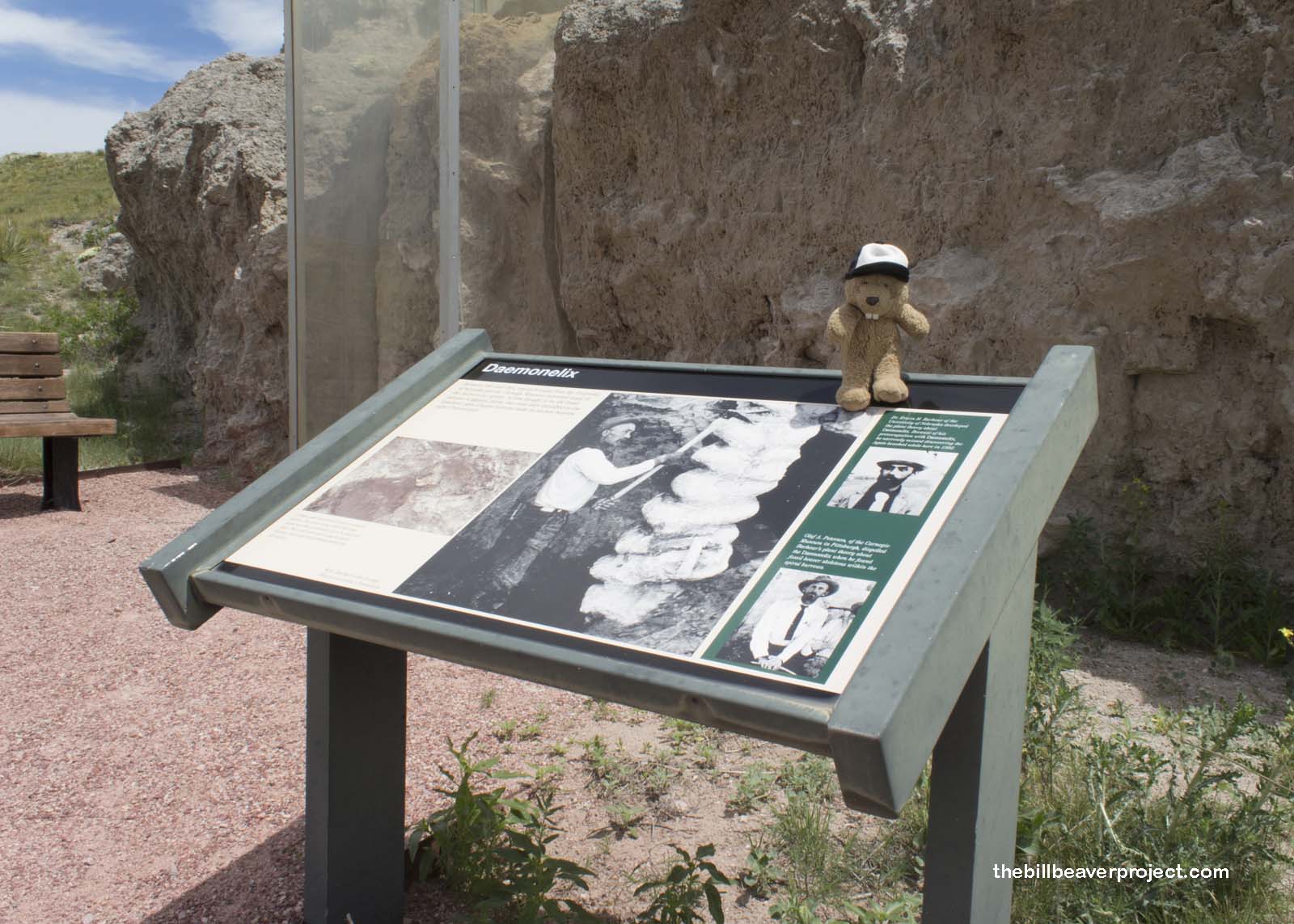 |
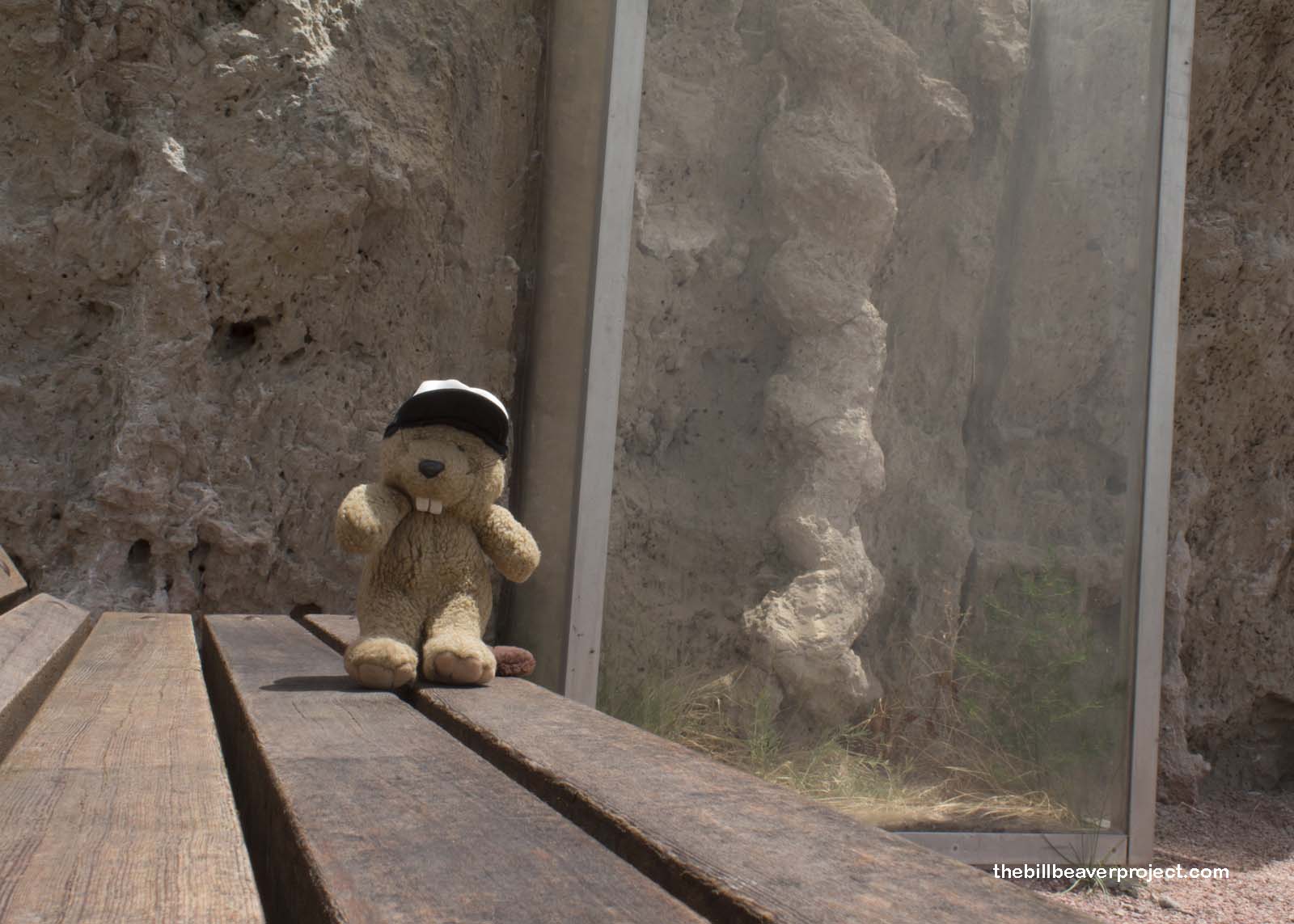 |
All around these ancient burrows, the new prairie was in full bloom with prairie snowballs, silver bladderpods, and the Argemone albiflora, known to most as the white prickly poppy, but known to me as the sunny-side up plant!
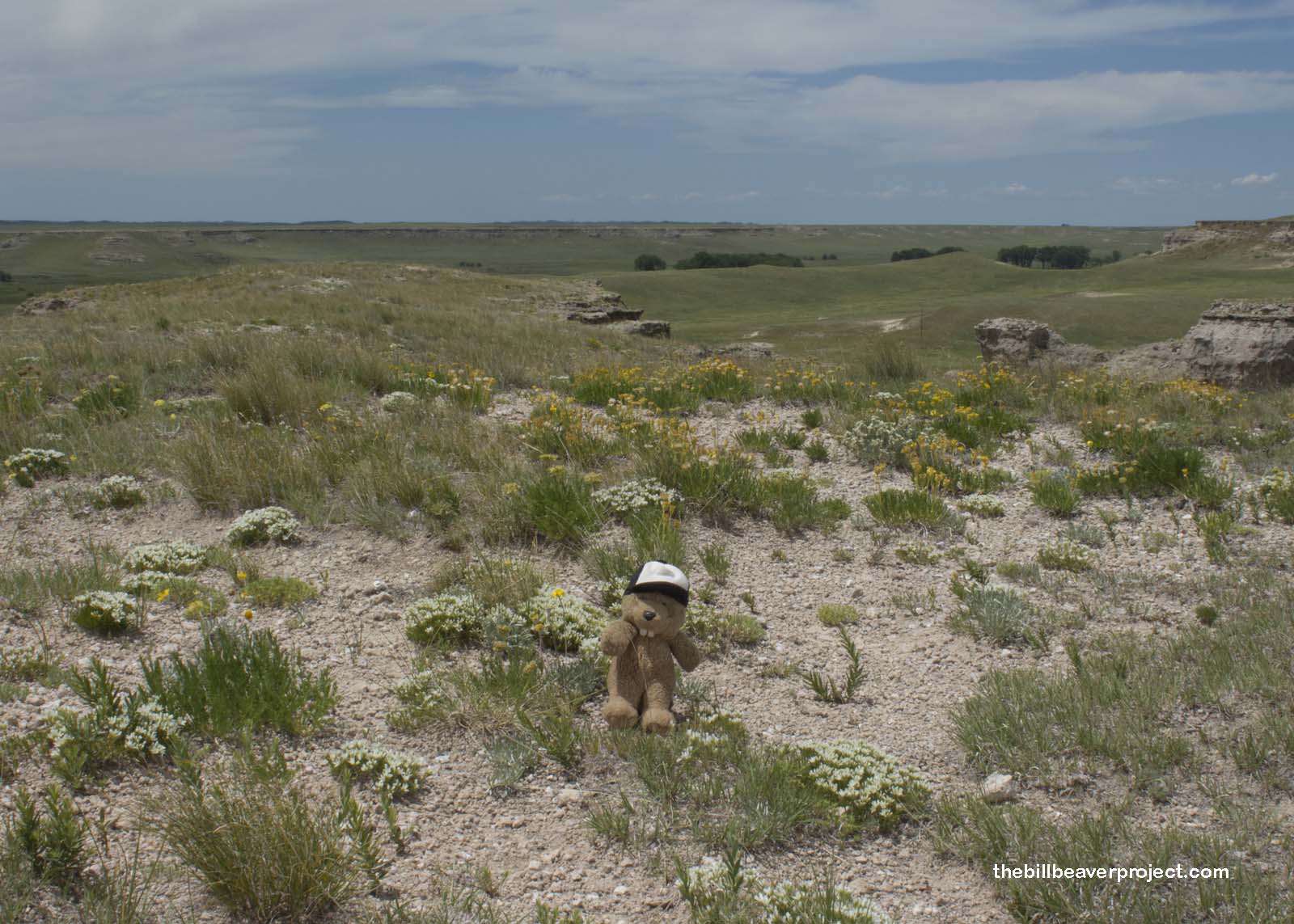 |
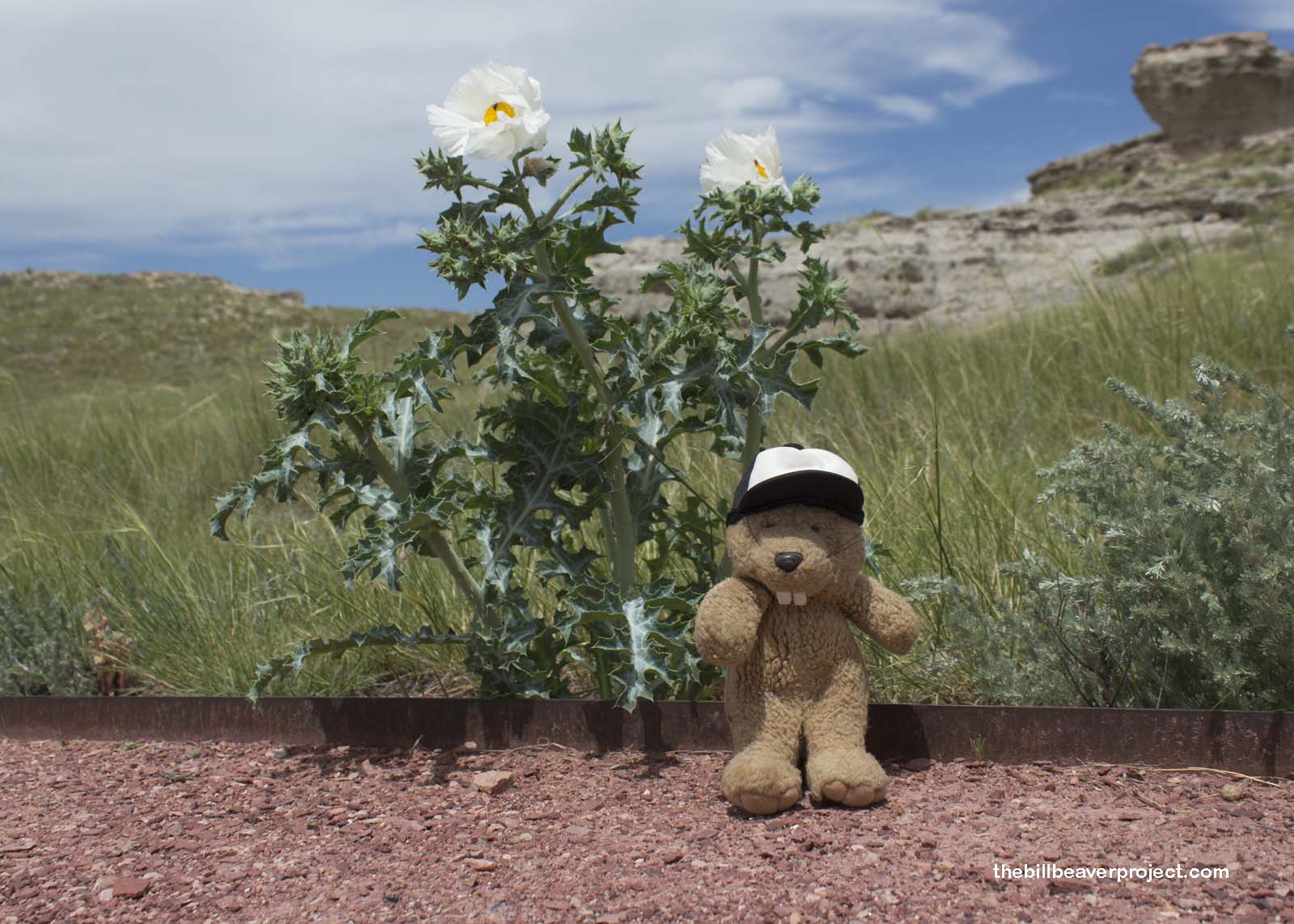 |
After completing the 1.8-mile loop of the Daemonelix Trail, I turned my sights toward the much longer Fossil Hills Trail. After a brief stop at the visitor center to see recreated skeletons of ancient creatures and the exhibit of Lakota Sioux artifacts gifted to James H. Cook, a long-time friend of Chief Red Cloud, I headed out into the hills to see what I could see!
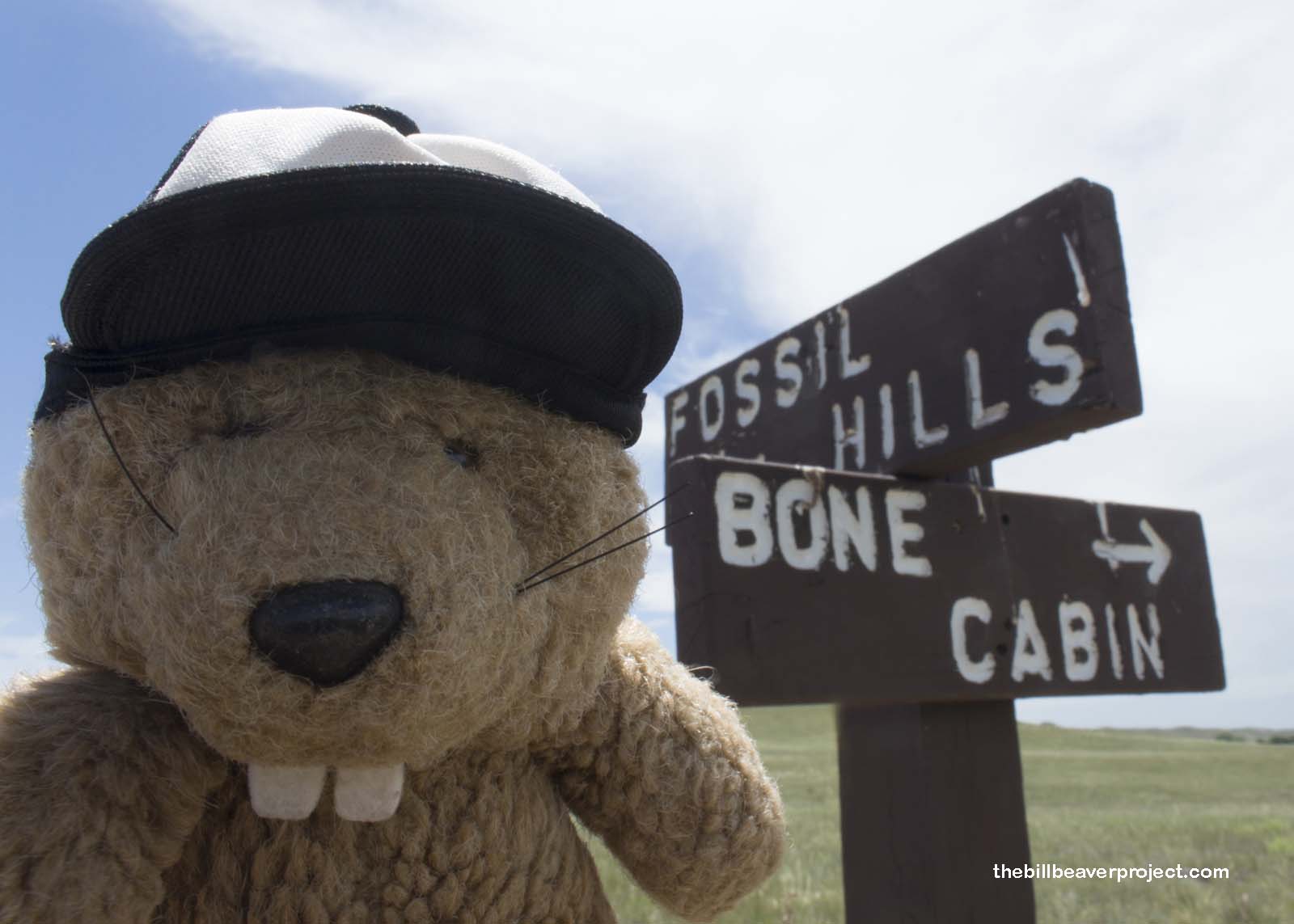 |
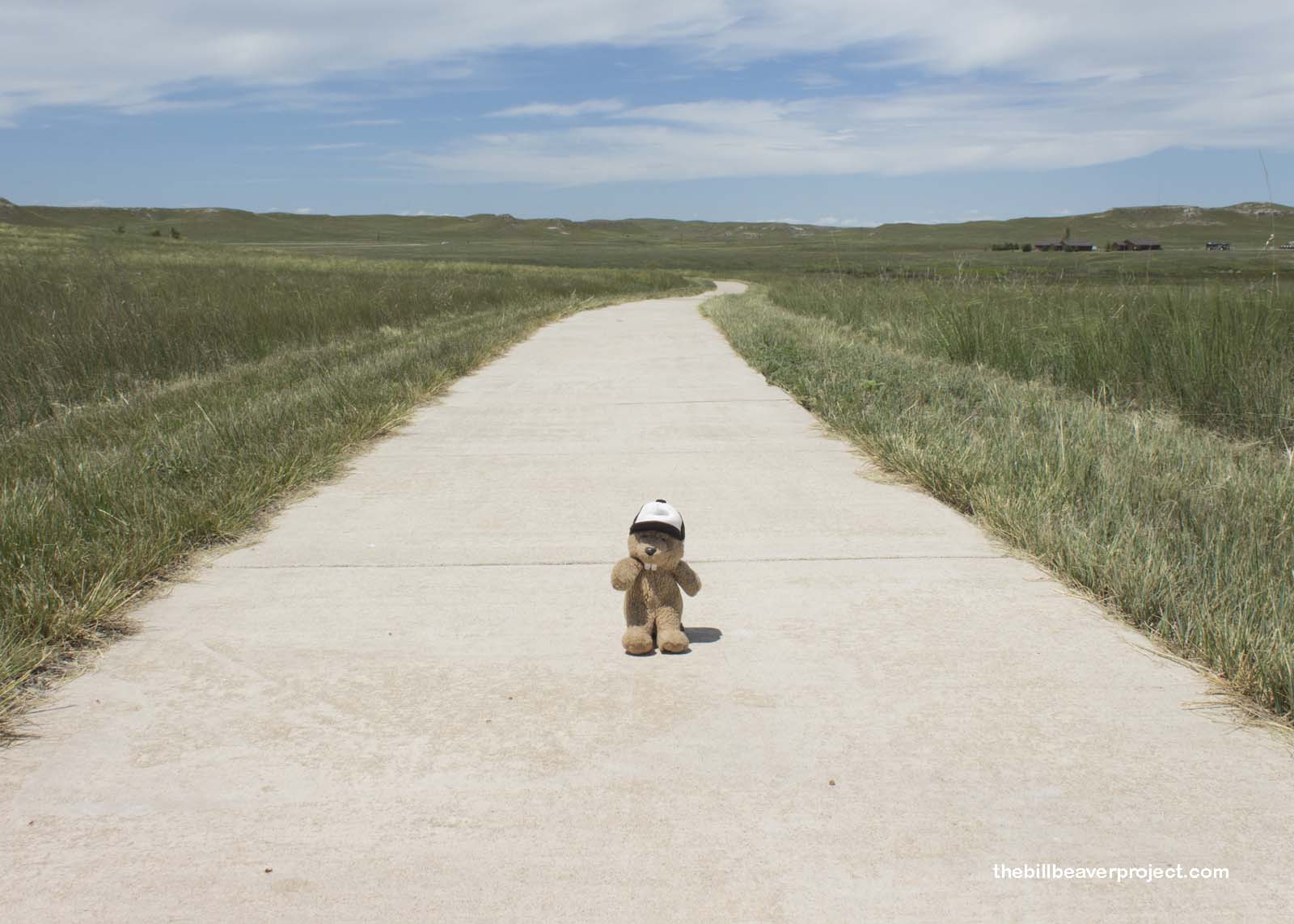 |
The prairie grass was thick along the sides of the walkway. In some parts, I thought it would swallow me right up! It was the thickness of this grass that made it so hospitable for settlers, because the dense roots would hold soil together so tightly that it could be cut into sod blocks and used as bricks to build houses!
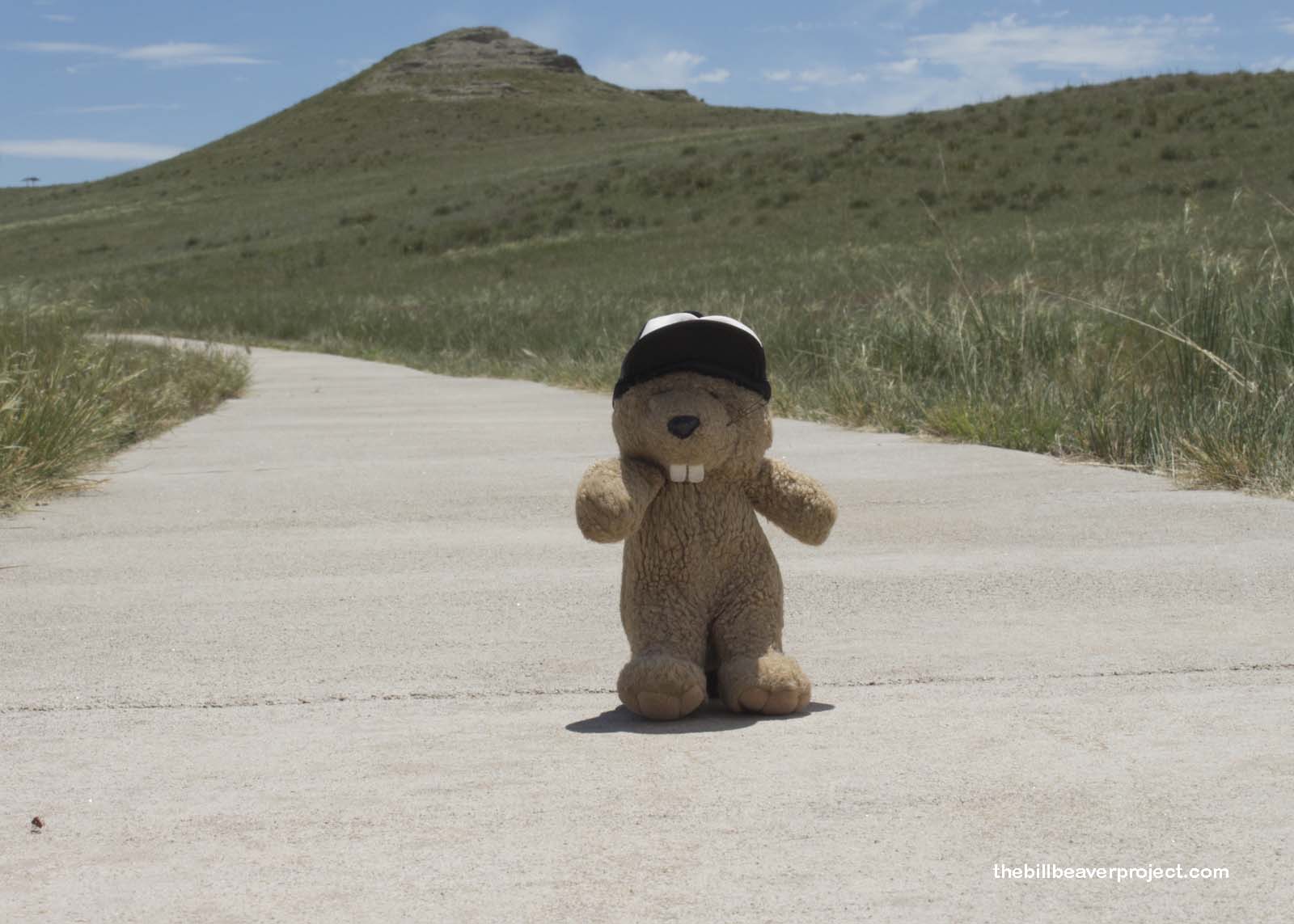 |
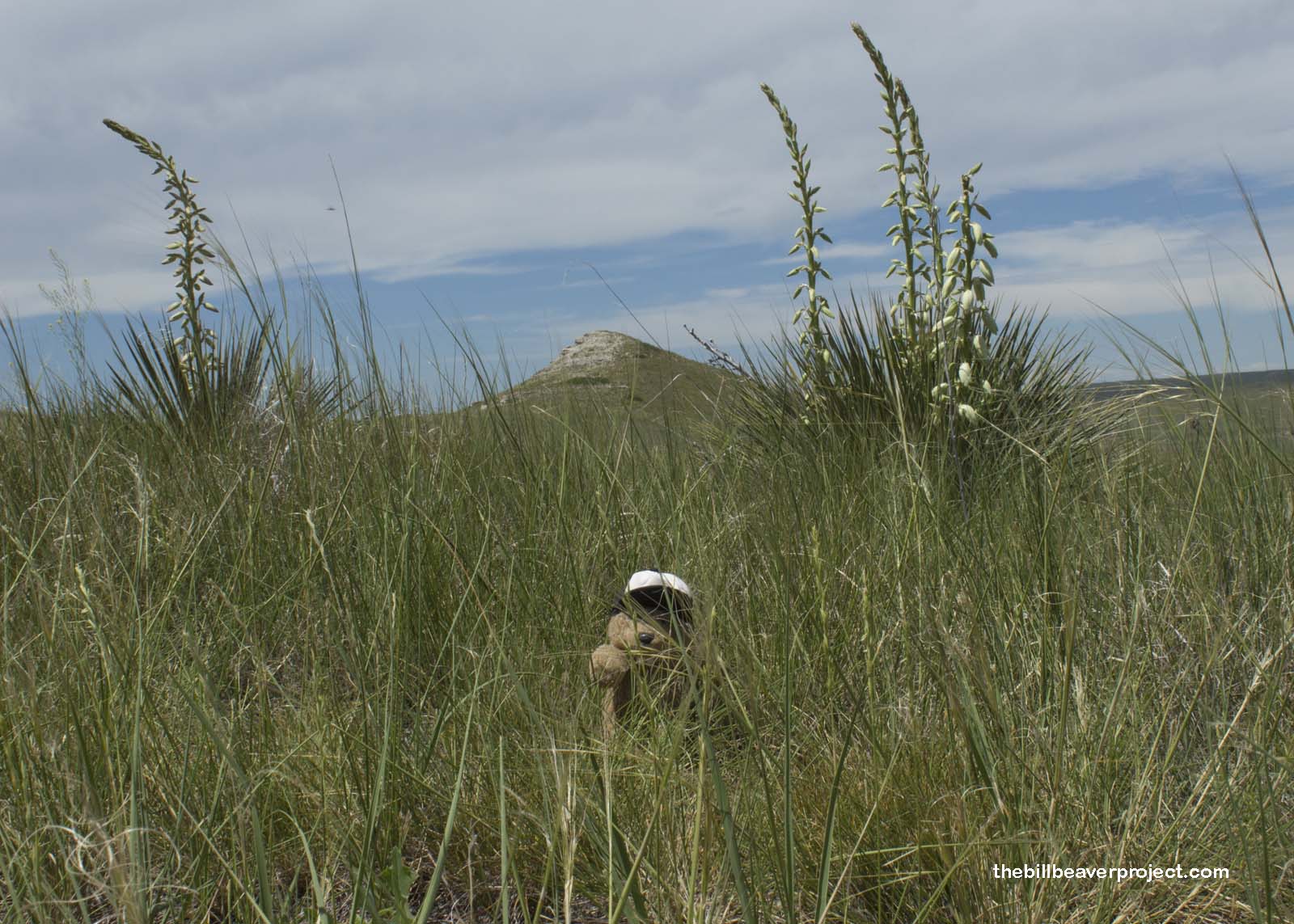 |
My first stop on this prairie walk was University Hill, where aforementioned paleontologist Erwin Barbour teamed up with the University of Nebraska in 1908 to uncover the secrets of this ancient watering hole. During a long period of drought, animals from all around flocked to this watering hole to try and survive. Those that didn’t survive were dug up from here millions of years later!
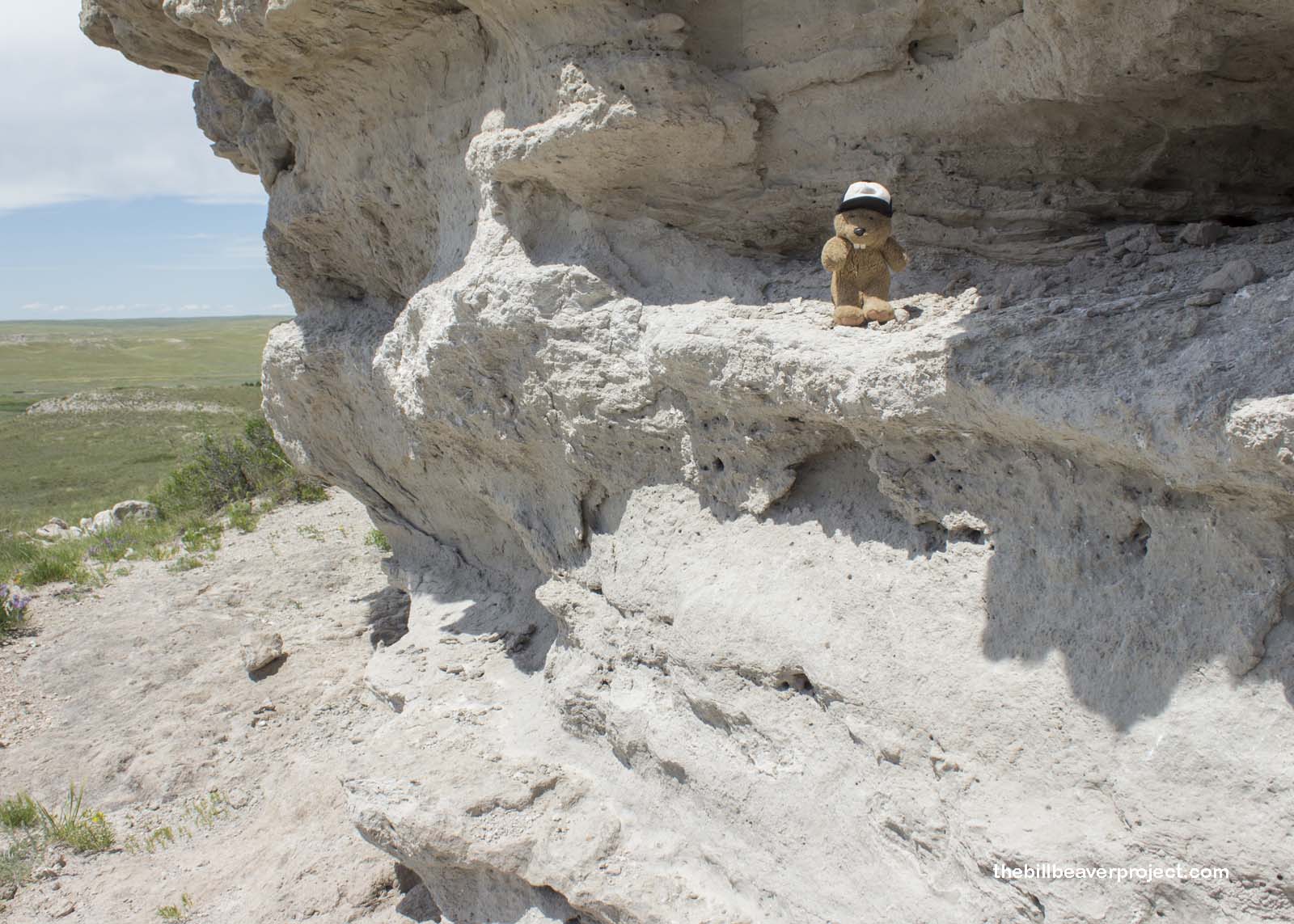 |
There were such things as giant carnivorous “pigs” called entelodonts and huge clawed horses called chalicotheres! There were miniature rhinos called menoceras and coyote-sized carnivores called beardogs! They were buried here so densely that paleontologists had to remove giant blocks of sediment and carefully separate all the bone pieces from each other!
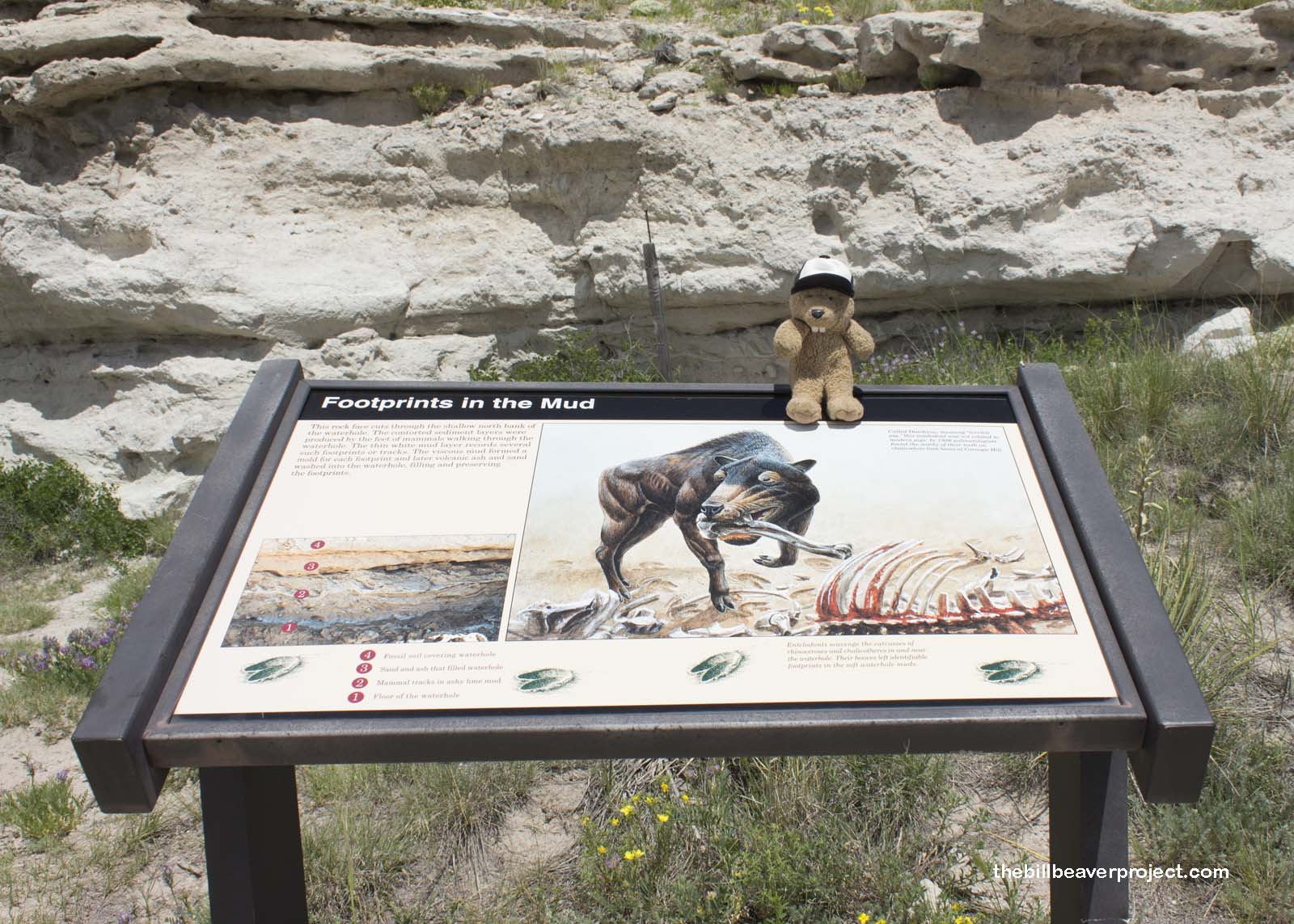 |
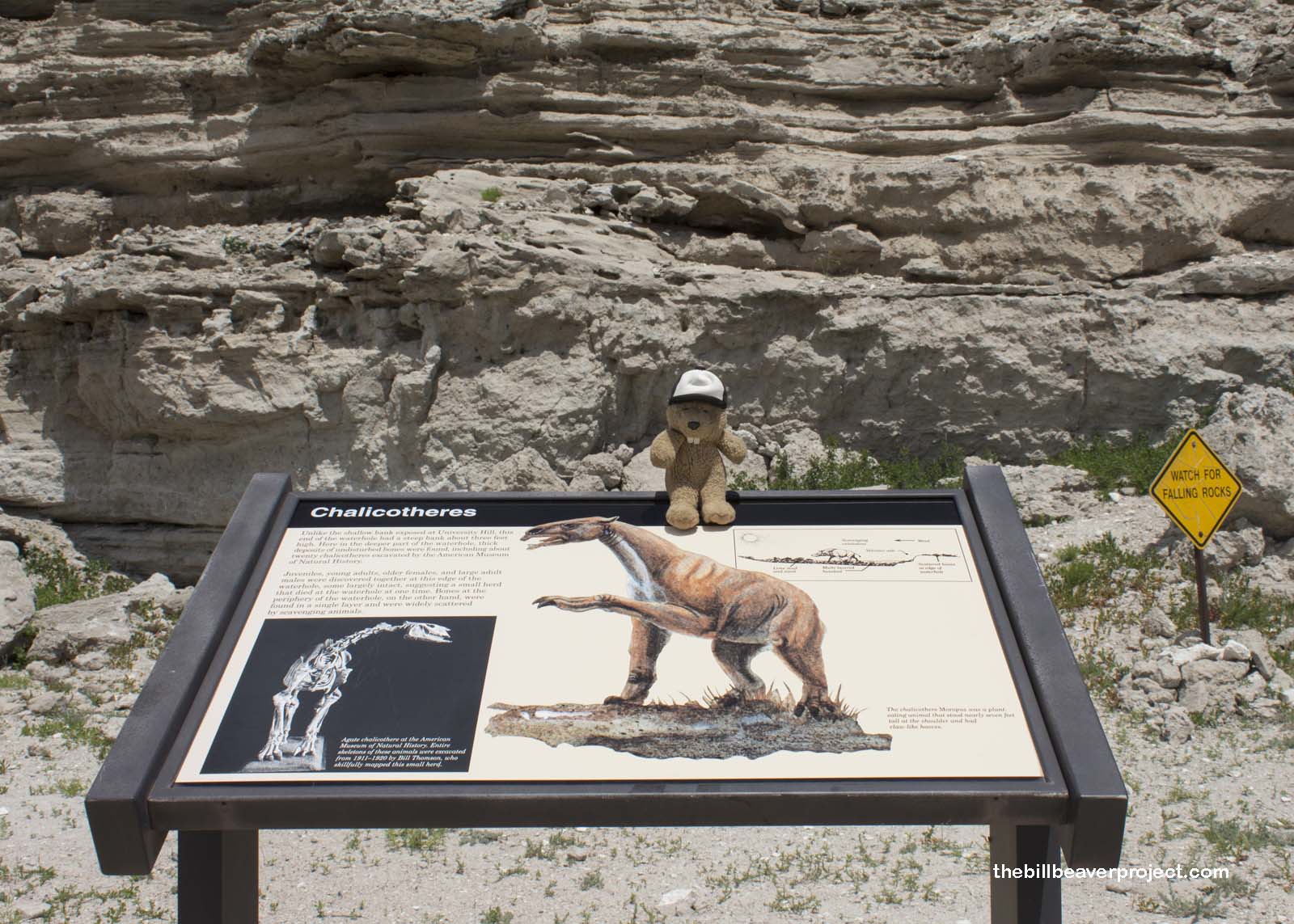 |
Not far from University Hill stood Carnegie Hill, once a steep-banked watering hole where twenty chalicothere fossils were found during excavations by Bill Thomson and the American University of Natural History between 1911 and 1920! Though all the visible fossils have been taken to labs and museums, the rock faces where they were found still linger, with great views of the prairie below that would have made this a fine place to dig!
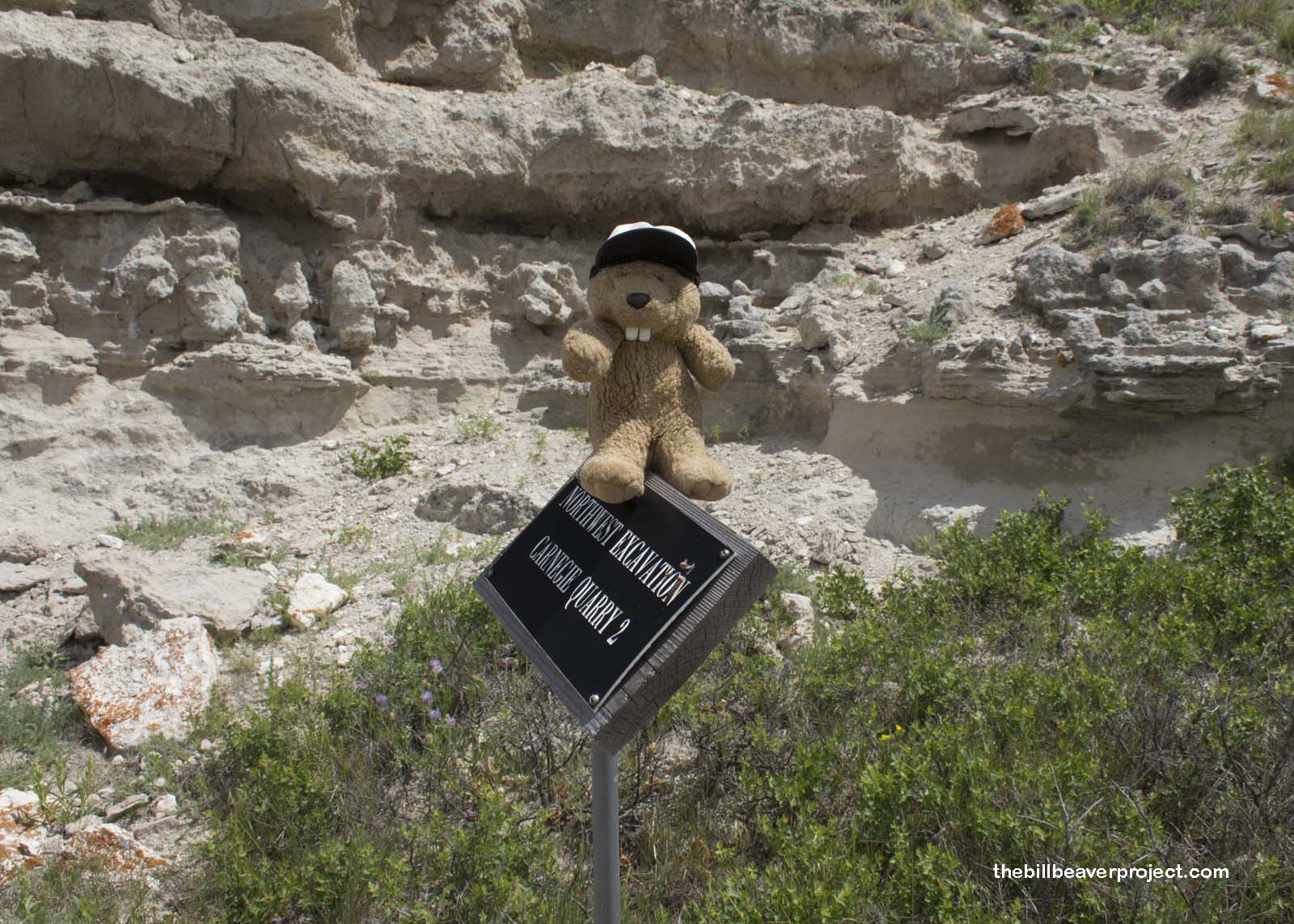 |
 |
This corner of western Nebraska really surprised me with its hidden secrets, its neat plants and the amazing animals that once roamed the savannah here. It makes me wonder what new creatures will be wandering these plains in another 5-23 million years. If only I could find a time machine…
Agate to go!

 Previous Day |
Total Ground Covered: 646.6 mi (1,040.6 km) |
 More 2017 Adventures |
